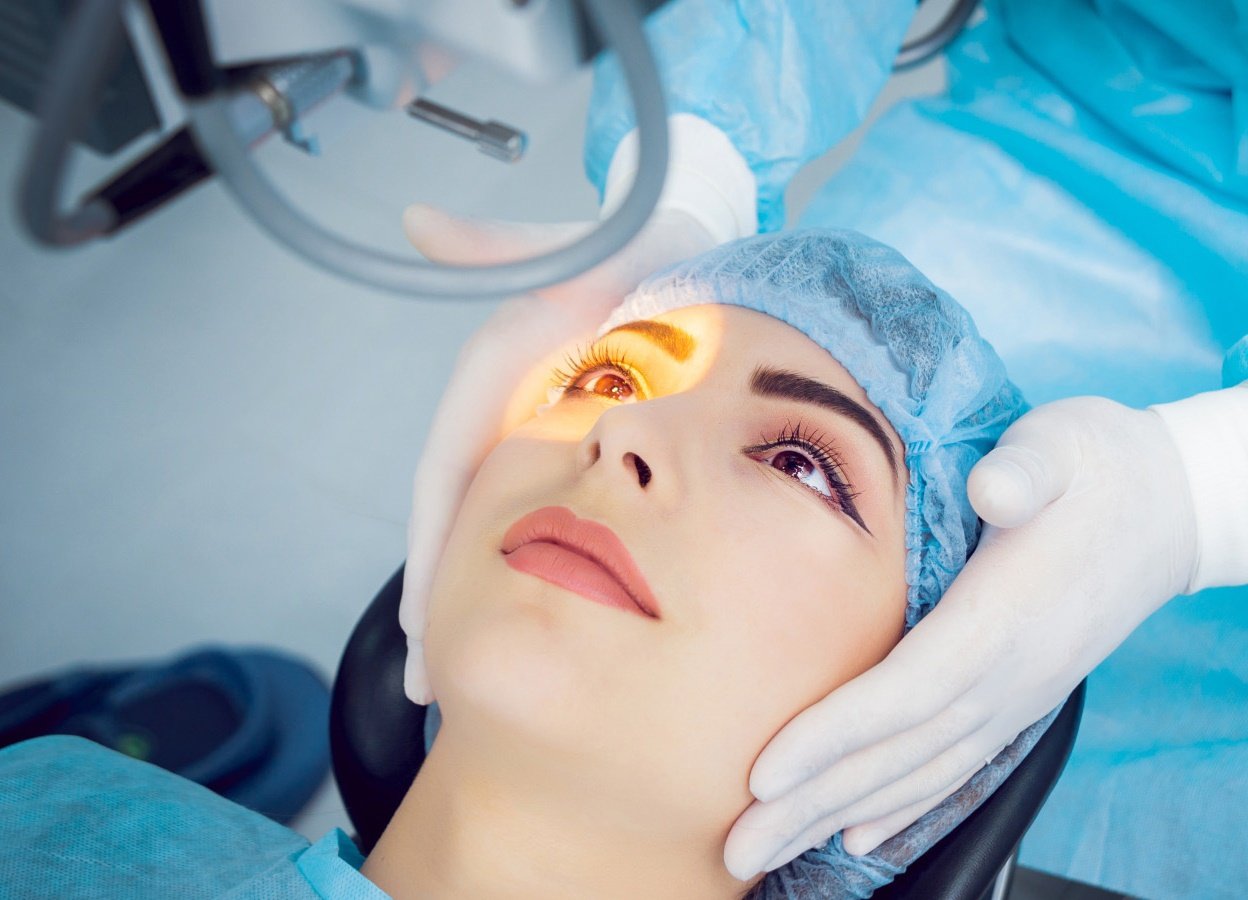Cataract Surgery In Nagpur
Cataract Surgery In Nagpur
A cataract is an eye disorder that usually develops in old age caused by the clouding of the natural lens of the eye also may occur in infants and young children too. Therefore, The lens is made up of proteins and fibers in the eye that is clear and allows the passage of light. With age or due to some other reason, like accidental injury, disease like diabetes, etc, the proteins and fibers may start to cluster together, resulting in the clouding of the lens.
Firstly, The cloud will prevent the light from passing through the eye lens and affect vision. Once A cataract occurs problems like blurry vision, glare, and sensitivity to bright lights.
Thus, As the problem increases, it leads to a painless, progressive decrease in vision which can also result in a poor quality of life, interfering with day-to-day activities like driving and reading.

Cataract Symptoms:
When patients suffer from cataracts some symptoms will be observ. The symptoms will be different with different patients. following some symptoms are:
- Cloudy, blurry, or dim vision
- Difficulty in seeing at night
- Light and glare sensitivity
- Seeing halos around the lights
- Frequent changes in vision
- Fading colors
- Double vision
Stages of Cataract:
There are four stages of cataracts
- Early cataracts
- Immature cataracts
- Mature cataracts
- Hyper mature cataracts
Types of Cataracts:
Following are the types of cataracts
- Nuclear Cataract
- Cortical Cataracts
- Posterior Subcapsular Cataracts
- Congenital Cataracts
- Secondary Cataracts
- Traumatic Cataracts
- Radiation Cataracts
Diagnosis of Cataract:
Similarly, To identify the grade or severity of the cataract, the doctor examines the eye physically. For the correct diagnosis, the doctor will recommend the following tests-
- Visual Acuity & Refraction Test– Inside These examinations, doctor checks the sharpness and clarity of the vision. The doctor will check one eye at a time to look for signs of visual impairment.
- Slit-Lamp Examination– Therefore,The examination shining a bright light on the eye with the help of a microscope. The reflection of the light is observ to identify the spots that are opaque.
- Retinal Examination- However, The examination first dilate the pupils and examine the retina to check if the light rays are reaching the surface or not.
In these examinations, the ophthalmologist determines to which extent the cataract has progress and what would be the best technique to remove it.
Types of Cataract Surgery:
The different types of cataract surgery are explain below
- Phacoemulsification- In this technique uses an ultrasound probe to break or emulsify the cloud part of the lens. Tiny incisions require the cornea to access the lens, and the probe is insert into the eye to remove the cataract.
- Extracapsular Cataract Extraction- In this technique, the cataractous lens is broken up using either a laser or using ultrasound waves most of the broken cloud lens is extracted through a tiny hollow tube. Then It is left in place to implant the artificial lens. The incision made in this technique is around 10-12 mm.
- Intracapsular Cataract Extraction- Therefore This technique required a large incision in the eye to remove the entire lens and its capsule. After cataract removal, the anterior chamber lens is implanted in the eye with the help of 5 to 7 stitches.
- Microincision Cataract Surgery- Besides This minimally invasive technique is performed by making an incision of 1.8 mm in the eye. A self-healing scleral tunnel wound is created to remove the cloudy lens.
- Femtosecond Laser-assisted Cataract Surgery- Femtosecond Laser-assisted Cataract Surgery is the most popular and minimally invasive technique of cataract removal. In this surgery, a femtosecond laser makes the incision and removes the cloudy part of the lens.
The most Importantly technique for cataract removal is chosen after diagnosing the patient’s condition. At Anantwar Eye Hospital, we leverage all these techniques depending on the patient’s condition.
Cataract Surgery Procedure:
Thus, The cataract surgery procedure is carry out using the following steps-
- Similarly You will be given a sedative to help you relax as you will be awake during the surgery.
- The medical team will take you to the OT, and your body will be cover entirely except the eyes.
- Thus, The eyes will be clean, and the surgeon will make an incision in the eye to access the cloud lens.
- Depending on the method of treatment chosen, the surgeon will emulsify the cloudy parts of the lens, leaving a small capsule behind which can hold the artificial intraocular lens.
- Therefore, the IOL is implanted inside the eye, and the incision is closed.
As a result, the procedure for cataract surgery remains the same; only the techniques differ.

